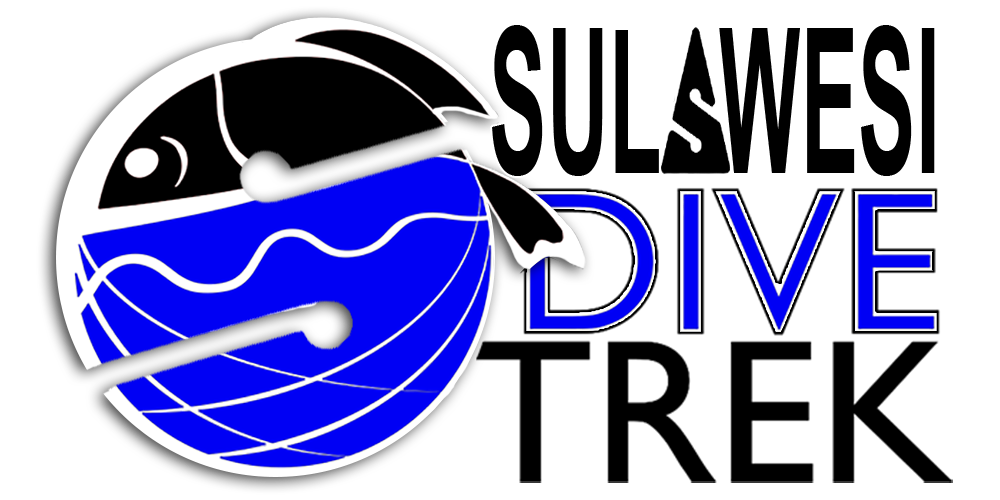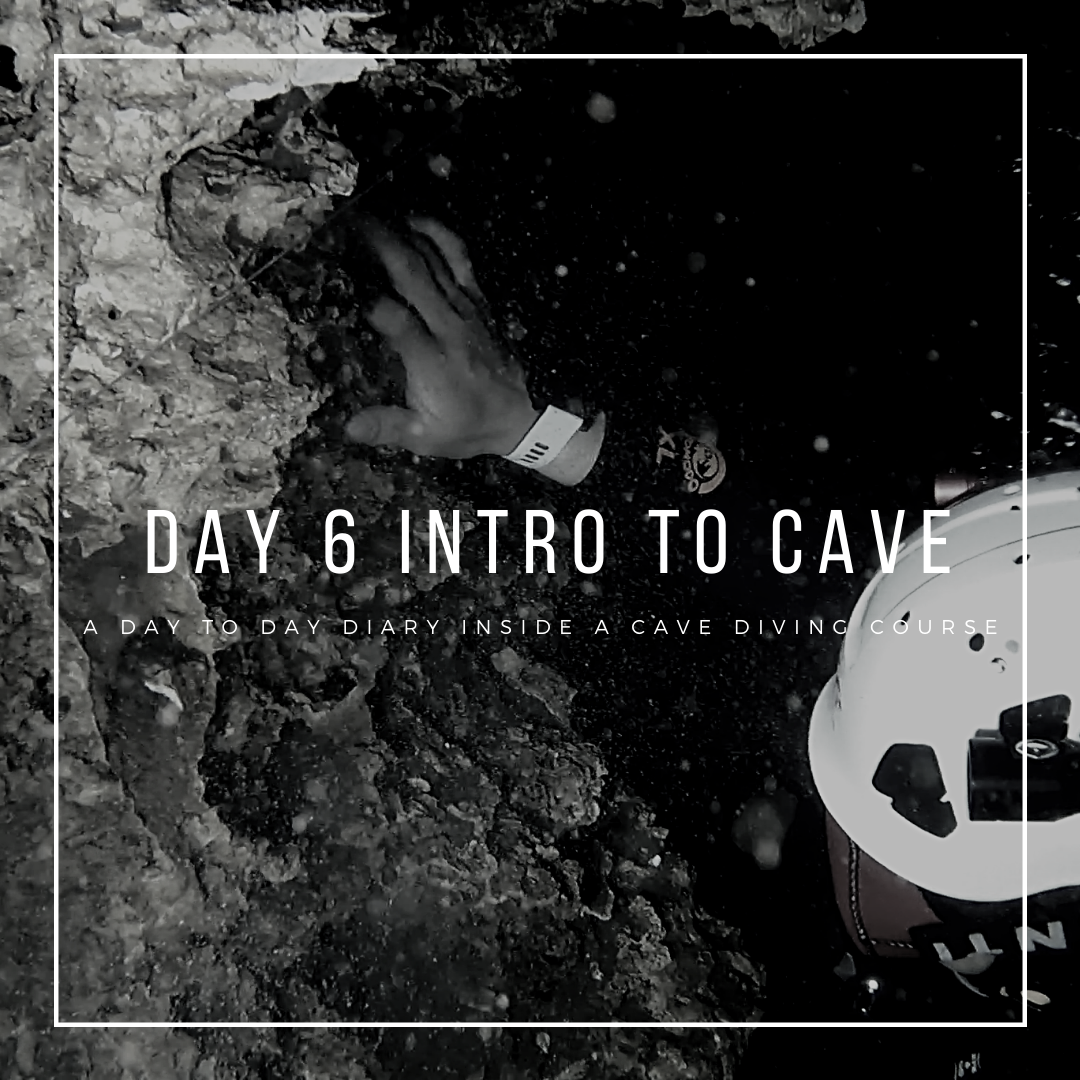Day 6 Introductory Cave Diver.
Location: Wangi-Wangi Island, Wakatobi.
Cave: Goa Kontamale to Teekosapi
Dive time: 159 minutes
Accumulated Dive time: 899 min
Today is all about planning. I am going to give my students a pretty complex plan to follow and see how they can perform a dive and stick a predefined plan.
But before that, I wanted to spend some time talking about a hot topic in cave diving: Accident analysis and prevention.
Accident analysis has been one of the engines of the establishment of a standardized cave diving training over the past twenty years. The protocols and equipment we are using now are not the same that they used to be and the sport evolved a lot. This being said, equipment and protocols may have changed but caves still are caves and they have their inherent risks that will never change.
So how did accident analysis enhanced safety for cave divers? Long story short: we find root cause in an accident, link that to a rule violation and try to find a way to avoid this violation or improve the rule.
Talking about accident is the best way to ingrain the idea in student mind’s that cave diving is a risky activity, but that those risks can be mitigated by following and sticking to the rules while being conservative enough that even if we f*** up (and we will) we can make it alive. It is not about being morbid and dark but about learning about other people mistake in order to not reproduce them.
From this day until the end of the course we will try to read one accident report every day and discuss about it, the root cause and what could have been done to avoid it.
It is really a interesting subject that should be IMO emphasized by every single cave diving instructor. Reading and analyzing those reports are a must in order to increase team’s safety. As is sharing your own mistakes.
Myself as an active instructor and cave explorer I can proudly say that I did a lot of mistakes and survived them all. I have the experience of the fuck up and I am not ashamed to share those to my students. I am not ashamed because I know I am human and I know also that even though I did those mistakes, I have put efficient safety net and reserve in all my dive planning so I can be here to talk about it.
This culture of sharing is what will drive the cave diving community toward a safer practice and that start here, in the cave diving course I teach.
After this quite intense discussion we jumped in to the skill of the day : Lost line. Probably the most challenging one.
Just a quick resume about it: you have lost the line (can be for many reasons, all mostly pointing toward lack of awareness) and now you’re alone, in the dark, no visibility and no line in your hand. Bummer! But not all hope is lost. First of all remember that you’re a safe and conservative diver and your gas reserve is more than enough to face any challenge. That’s a good start. Now remember also that you’ve learned in your quality cave diving course how to react in this particular situation. Just launch the lost line protocol and you’ll be fine.
To give you a brief insight about it, lost line protocol consists about using a spool, create a reference on the bottom from where you will start a thorough search pattern that you will cook in this impressive brain of yours while remembering how was the cave at that moment of lost line, where you think you are positioned, where do you think the line etc. All those information that you’re supposed to constantly register about you, the line and the cave, are going to be very useful for your survival. The search pattern will be done with your spool and, if thought and done properly and methodically, you should find the line at some point, bingo!!!
We tried this drill on-land to discuss the option of search but the truth is in the in-water practice.
After that we started to plan that infamous dive. I gave a complex plan to my students to follow. This plan consisted of several actions to be performed during the dive. The point was not really to do or realize something specific but assess their capacity to stick to a plan, to discuss it, to plan it, to share it and to execute it. The key to a proper realization is communication. This has been a weakness for the team on the past few days and I wanted the day to be focused on that: communicate clearly and efficiently underwater. It is ok to forgot some part of the plan, this happens, but you should be able to communicate with your buddies and actually say what you have to say even underwater. And that is the complicated part. If the communication is not clear, misunderstood or misinterpreted then the plan goes bad.
When the plan was understood it was time to dive.
We spent almost three hours underwater and executed the plan as planned. Lot of mistakes were made but as usual they will be the base for debriefing, discussion and improvement. As said in the human diver course (a must read for all divers and instructors) “We can only get better via feedback…the performance of the system is based on how rich the feedback system is.”
And I tend to think that the debriefing and feedback part is one of the main things in my courses.
On the way back from the complex dive we had our fair share of out of air, no visibility and the infamous Lost Line drill. 50% of the team managed to get it done, next half will surely success on the upcoming dives. Failure is a milestone in the path of success.
We review the whole dive every day right on the spot. Based on every single member opinion about the performance of the diver or the team. I then add my own analysis as an instructor followed by review of all videos and every single mistake I have noted on my wet notes. The debriefing can last from one to two hours and that’s where we will capitalize about our day and make the next day better.
A very complete day today. It was our last in the famous Wakatobi archipelago. No hesitation the best place in Indonesia for entry level cave courses. Tomorrow we will move to Buton in order to find more complex and long caves in our path to become cave diver!!
If you missed it you can read Day 5’s report here:: https://www.sulawesidivetrek.com/index.php/2022/04/27/day-5-introductory-cave-diver-course/
List of all IANTD Courses, visit the IANTD Website : https://iantd.com/index.php/en-us/courses/iantd-ice-cave-mine-wreck-diving/


Лучшие онлайн-курсы https://topkursi.ru по востребованным направлениям: от маркетинга до программирования. Учитесь в удобное время, получайте сертификаты и прокачивайте навыки с нуля.
Школа Саморазвития https://bznaniy.ru онлайн-база знаний для тех, кто хочет понять себя, улучшить мышление, прокачать навыки и выйти на новый уровень жизни.
телефон наркологии номер наркологии
фото пансионата для пожилых пансионат для пожилых людей цена
Cross Stitch Pattern in PDF format https://cross-stitch-patterns-free-download.store/ a perfect choice for embroidery lovers! Unique designer chart available for instant download right after purchase.
вопрос юристу в Москве консультация юриста РФ онлайн бесплатно
Надёжная фурнитура https://furnitura-dla-okon.ru для пластиковых окон: всё для ремонта и комплектации. От ручек до многозапорных механизмов.
Фурнитура для ПВХ-окон http://kupit-furnituru-dla-okon.ru оптом и в розницу: европейские бренды, доступные цены, доставка по РФ.
печать спб типография типография санкт петербург
печать спб типография печать спб типография
заказать металлические значки производство металлических значков
производство металлических значков производство металлических значков
дешевое такси в аэропорт прага https://inotur.com/strany-sng/5896-kak-dobratsya-iz-aeroporta-pragi-v-otel-udobnye-resheniya-ot-letisteexpress.html
кредит 365 взять займ
хотите сделать утепление https://industry-portal24.ru/stroitelstvo/8126-plyusy-ispolzovaniya-penopoliuretana-dlya-zalivki-sten.html
Срочный микрозайм https://truckers-money.ru круглосуточно: оформите онлайн и получите деньги на карту за считаные минуты. Без звонков, без залога, без лишних вопросов.
Срочные микрозаймы https://stuff-money.ru с моментальным одобрением. Заполните заявку онлайн и получите деньги на карту уже сегодня. Надёжно, быстро, без лишней бюрократии.
Discover Zabljak Savin Kuk, a picturesque corner of Montenegro. Skiing, hiking, panoramic views and the cleanest air. A great choice for a relaxing and active holiday.
AI generator nsfw ai video of the new generation: artificial intelligence turns text into stylish and realistic pictures and videos.
Услуги массаж ивантеевка — для здоровья, красоты и расслабления. Опытный специалист, удобное расположение, доступные цены.
Онлайн займы срочно https://moon-money.ru деньги за 5 минут на карту. Без справок, без звонков, без отказов. Простая заявка, моментальное решение и круглосуточная выдача.
услуги ремонт стиральных машин ремонт стиральных машин вызов на дом
Офисная мебель https://mkoffice.ru в Новосибирске: готовые комплекты и отдельные элементы. Широкий ассортимент, современные дизайны, доставка по городу.
UP&GO https://upandgo.ru путешествуй легко! Визы, авиабилеты и отели онлайн
центр ремонта стиральных машин ремонт стиральных машин remont stiralok
Hindi News https://tfipost.in latest news from India and the world. Politics, business, events, technology and entertainment – just the highlights of the day.
Mountain Topper https://www.lnrprecision.com transceivers from the official supplier. Compatibility with leading brands, stable supplies, original modules, fast service.
New AI generator ai chat nsfw of the new generation: artificial intelligence turns text into stylish and realistic image and videos.
Animal Feed https://pvslabs.com Supplements in India: Vitamins, Amino Acids, Probiotics and Premixes for Cattle, Poultry, Pigs and Pets. Increased Productivity and Health.
ремонт стиральной машины gorenje сколько ремонт стиральных машин
Как оформить карту prepaid иностранная карта для россиян в 2025 году. Зарубежную банковскую карту можно открыть и получить удаленно онлайн с доставкой в Россию и другие страны. Карты подходят для оплаты за границей.
LMC Middle School https://lmc896.org in Lower Manhattan provides a rigorous, student-centered education in a caring and inclusive atmosphere. Emphasis on critical thinking, collaboration, and community engagement.
•очешь продать авто? auto magic
Агентство контекстной рекламы https://kontekst-dlya-prodazh.ru настройка Яндекс.Директ и Google Ads под ключ. Привлекаем клиентов, оптимизируем бюджеты, повышаем конверсии.
Продвижение сайтов https://optimizaciya-i-prodvizhenie.ru в Google и Яндекс — только «белое» SEO. Улучшаем видимость, позиции и трафик. Аудит, стратегия, тексты, ссылки.
Медицинский центр https://s-klinika.ru с современным оборудованием и опытными врачами. Диагностика, лечение, профилактика — взрослым и детям.
Производство и монтаж https://verspk.ru инженерных и технологических систем для промышленных объектов.
LEBO Coffee https://lebo.ru натуральный кофе премиум-качества. Зерновой, молотый, в капсулах. Богатый вкус, аромат и свежая обжарка. Для дома, офиса и кофеен.
Gymnastics Hall of Fame https://usghof.org Biographies of Great Athletes Who Influenced the Sport. A detailed look at gymnastics equipment, from bars to mats.
нейросеть создать сайт нейросеть создать сайт
клиника хирургии детская клиника
medical centar budva Bar hospital
mostbet blackjack mostbet4042.ru